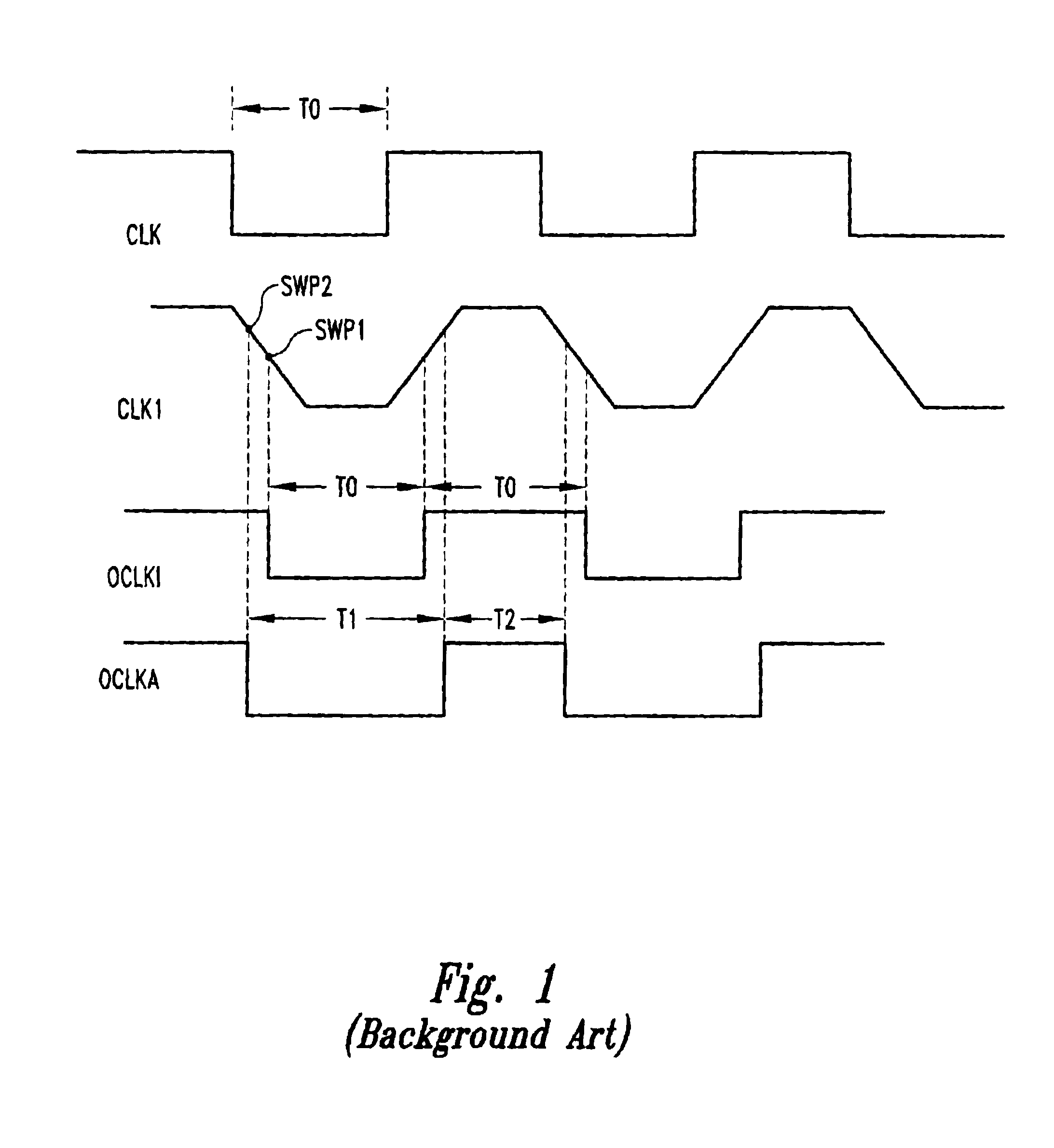Low skew clock input buffer and method
a low skew, clock input technology, applied in the direction of generating/distributing signals, pulse techniques, instruments, etc., can solve the problems of undesirable skew, duty cycle skew, and limitations and disadvantages
- Summary
- Abstract
- Description
- Claims
- Application Information
AI Technical Summary
Problems solved by technology
Method used
Image
Examples
Embodiment Construction
FIG. 2 is a functional block diagram illustrating a differential input buffer 200 according to one embodiment of the present invention. The differential input buffer 200 includes a pair of differential amplifiers 202 and 204 that generate output signals F0 and R0, respectively, in response to a pair of complementary clock signals CLK and CLK* applied on positive and negative inputs of each amplifier. Each differential amplifier 202, 204 operates in a conventional manner to generate the corresponding output signal F0, R0 in response to the voltage across the positive and negative inputs. Note that the complementary clock signals CLK, CLK* are applied to opposite inputs for the differential amplifiers 202 and 204, with the CLK signal being applied to the positive input of amplifier 202 and negative inputs of empire 204 and the CLK* signal being applied to the negative inputs of amplifier 204. By using two differential amplifiers 202 and 204 coupled in this manner, a particular edge of...
PUM
 Login to View More
Login to View More Abstract
Description
Claims
Application Information
 Login to View More
Login to View More - R&D
- Intellectual Property
- Life Sciences
- Materials
- Tech Scout
- Unparalleled Data Quality
- Higher Quality Content
- 60% Fewer Hallucinations
Browse by: Latest US Patents, China's latest patents, Technical Efficacy Thesaurus, Application Domain, Technology Topic, Popular Technical Reports.
© 2025 PatSnap. All rights reserved.Legal|Privacy policy|Modern Slavery Act Transparency Statement|Sitemap|About US| Contact US: help@patsnap.com



